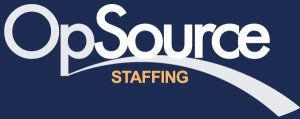Job-seekers and Employers, if you would like to discuss how OpSource Staffing Inc. can help you call us at (866) 870-8133 or Contact Us.
The best time to capture talent is right after they graduate. Hiring
promising grad talent is a good strategy to bring in fresh, innovative ideas, which has worked out for several corporate giants.
However, as with all techniques for growing a business’s talent pool, it comes with its own pitfalls, and making a wrong hire can have severe consequences for an organization. Companies need this new blood to continue providing top quality services and products for their clients. But how does a company ensure that it lands the best talent to fit its existing ideals?
These 13 experts from Forbes Human Resources
Council share their best tips to help a business narrow down the potential rising talent pool into the best fit for the company.
1. Lead With Culture
Today’s grads have choices and care about more than just titles and salaries. As an employer, it’s important to lead with culture and promote the work climate. What’s a typical day like? Do colleagues spend time with each other outside of work? Is a healthy work-life balance encouraged? Grads want a safe place to land after college and that means loving their job and wanting to come into work! – Polina Wilson, Unruly ®
2. Follow The Metrics
That means study your effectiveness. Recruit at schools that produce not only the type of candidates you want, but also where people have been successful and have remained within your organization. Target schools that you can realistically recruit from and be aware of where your competition is targeting, as well. Gen Z is better educated than any in history, but they have choices. – Russell Klosk, Accenture
3. Hire For Soft Skills
Hire for soft skills and train on the hard skills. Providing your employees with development and growth opportunities is not just a selling point for new grads, it also increases overall employee retention. It’s a win-win. – Jenna Hinrichsen, Advanced RPO
4. Establish Value-Add Relationships
Establish value-add relationships with the schools you’re targeting top grad talent from. Create opportunities for your leader, SMEs, etc. to volunteer their time toward value-add offerings such as complimentary job-search/career-planning sessions that can be held throughout the school years and/or at their career fairs. This will build trust and brand equity for your employer brand. – Bryan Passman, Hunter + Esquire
5. Showcase Your Top Talent Stories
Create short video bites of why your top talent loves working for your company. Showcase how internships have fostered full-time careers
which in turn are fueled by continuous learning opportunities. Recent graduates offer myriad accomplishments. Assess new hires on top three grad accomplishments that jive with your company’s values. Use career
stories to whet and net the right talent. – Jay Polaki, HR Geckos
6. Strengthen Your Internship Program
Internships are well known for fostering robust talent pipelines regardless of type, location or industry, but that’s not all. These programs also offer candidates hands-on opportunities to work in their desired field before committing. This allows both candidates and employers to “try before you buy,” which can reduce long-term operational and financial impacts related to vacancies or turnover. – Dr. Timothy J. Giardino, BMC Software
7. Look For Signs Of Excellence
Recent graduates don’t always have the opportunity to attain experience in a professional setting. When hiring, look for signs of excellence in at least one discipline, which is usually academic success in their chosen areas of study. Alternatively, look to athletic accomplishments or any other indication of putting in sustained effort and achieving results. – Rachel Lyubovitzky, EverythingBenefits
8. Consider Work Experience While In School
There is a tremendous value that new employees gain from their first work experience, whether a part-time role, summer internship, or a job unrelated to their field of study. While many may be new to the 9-to-5 career, students who have financially supported themselves through their schooling have already stress-tested their ability to overcome challenges and succeed. – Erald Minga, Kellogg School of Management
9. Look For These Willing To Learn On The Job
When considering recent grads, companies should prioritize candidates who have taken it upon themselves to research the role and have demonstrated an eagerness to learn on the job. Look for honesty and transparency in the hiring
process — they may not have experience in a specific area, but they should be open about it and confident they can learn what they need to in order to succeed. – Laura Spawn, Virtual Vocations, Inc.
10. Offer Training And Promotion Opportunities
New grads have spent the last year or two anxiously awaiting the day they will join the workforce. Though they’ll be starting from square one, they’re looking for more than just a cubicle and a paycheck. Employers hoping to attract recent grads must be able to show what training opportunities are available to them, how these can lead to future promotions and how their work can impact the company. – John Feldmann, Insperity
11. Start Sooner Than Graduation
Top talent can be seen early in the college career. Companies need to be open to internships starting in a student’s second year, then bring them back for summers following. Don’t be afraid to offer a job for an entry-level role at the end of their last internship with you. Many companies do this and it gets them the talent they want early and creates an invested new employee. – Kelly Loudermilk, BuildHR, Inc.
12. Consider Personality, Too
Look at behavioral fit with the organization as much as current skills. Skill needs will continue to fluctuate; however, personality traits tend not to change at the same pace, if at all. So ensuring a good behavioral fit will enable better two-way engagement, a swifter start and will likely ensure a greater tenure. – Paul Phillips, Avanade
13. Check Out Technical Bootcamps
Another great place to find new talent is from technical bootcamps. These programs are usually looking for mentors and teachers, so create a volunteer program for your team. Your employees will be ambassadors for your organization, get management experience and get to personally know the students. These grads will then be familiar and excited about your company and anxious to apply to open roles! – Jessica Adams, Brad’s Deals
Article Provided By: Forbes

Related Posts

By OpSource Staffing
•
23 Feb, 2021
Advantages: 1. Strategically balance labor needs and production levels by bringing in workers when they need them and then letting them go when they do not. 2. Convert a historically fixed labor cost to a variable one while shifting liabilities for unemployment, EEOC matters, benefits, and worker's compensation to a third party. 3. Use of contracted suppliers to manage low-skilled tasks leads to better outcomes at a lower cost. 4. Purchasing and finance departments save money on what companies pay for the hourly bill rate. Disadvantages: 1. Large disparity in pay between full-time regular employees and temps gives rise to a wide gap in the quality and dedication levels between the two types of workers. 2. Temporary workers display lower morale, higher absenteeism, greater turnover, less efficiency, and poorer work quality as compared to their full-time counterparts. 3. Decreased business efficiency as more labor hours are required to get the same amount of work done, largely due to exorbitant turnover and absenteeism, as well as constant restraining.

15 Jul, 2020
Career growth may seem like a controversial topic right now. Can you really have career growth in the middle of a global pandemic? Some people might roll their eyes at the thought or brush it off because it seems impossible. But what if it’s not? Whether you’ve been tossed into an unexpected job search or you’re secretly on the hunt for a new job, career growth should be your top priority. If you don’t make it a priority, you risk becoming stagnant, or worse, taking a step back in your career when it might not be necessary. But, even if it is a priority, you might not be taking it as seriously as you think. Here are five subtle signs you might be holding yourself back from career growth. You’re on cruise control or panic mode. This global pandemic has thrown tons of people into cruise control or panic mode. If you’re on cruise control, you’re probably telling yourself that now is not the time to make any sudden moves. Even though you’ve wanted to change jobs for a while now, you’ve likely convinced yourself that it’s best to keep your head down at work until the coast is clear. If you’re in panic mode, then you’re likely not thinking strategically about the next step in your career . You might be feeling like you have to take whatever you can get, without evaluating what you want or the various ways you can contribute to the next company. Both cruise control and panic mode are harmful to your career growth. Cruise control might feel safer, but it’s keeping you stagnant. Operating in panic mode might be stopping you from seeing all the ways you could successfully pivot your career and could have you taking detours you might not have to take. You’re not sure what career growth you want. Career growth looks different for everyone, especially right now. Career growth could mean more mentorship, more money, more leadership opportunities, more training and development, more impact, new challenges, a new industry, a better work environment, the list goes on and on. You may not want all of those things at once. You may not be able to get every single one of those things right now. But, it’s important to recognize which of those things are most important for your personal career growth so that you can at least try to aim for them. It’s like when you decide you want a specific car and all of a sudden you start seeing that car everywhere you go. But, if you never decided, you would’ve never noticed it passing you by. It’s the same way with career growth, if you don’t know what you want, you won’t have a clear focus moving forward and you’ll likely end up settling because you didn’t know what to pay attention to or ask for in your job search . You’re dwelling on the wrong things. It’s too easy to think negatively right now. But when it comes to your career growth, especially landing a new job that moves your career forward, thinking negative is 100% guaranteed to keep you stuck and stagnant regardless of how nice it would be to land a new job you’ll love. If you’re constantly asking yourself, “What if I don’t get it?” instead of, “How can I increase my chances of getting it?” then you’re spending too much energy entertaining negative possibilities when you could be welcoming positive ones. Instead of dwelling on the wrong thoughts and soaking up all the negative news, start paying attention to the things that are going right. Scroll down your LinkedIn feed and soak up the success stories of people celebrating accomplishments and starting new jobs right now, even if they are few and far between. Decide that it’s possible for you too. Attaining career growth is not just about doing the right things but thinking the right thoughts as well. You’re relying on motivation. No matter how well our intentions are, motivation is like that flaky friend who says they’re going to show up to the party but rarely ever does. When you’re worried about still meeting your deadlines, not catching coronavirus and landing a new job, you need something stronger than motivation if you want to make career growth a priority. You need a plan. When you have a clear and strategic plan on how to land a new job that will offer you the career growth you want, you can rely on discipline and consistency rather than motivation. You’re not strategic about getting support. You hear people say all the time, “network, network, network!” But, reaching out to strangers on LinkedIn expecting world-class advice and top-notch referrals without even building a genuine relationship or having a real conversation is not the way to go. Connecting with other professionals, and getting support from experts or career coaches, when done the right way, can be a catalyst for success. But if you have no clue how to do that, if you’re mass emailing people without any thoughtfulness, if you think getting support from a career coach is a luxury and not a necessity when you know you need guidance, then you’re not taking your career growth seriously and you should consider changing your approach. It is still completely possible to land a new job that moves your career forward, even right now. But it starts with you. If you know you’re guilty of one of these five things, that is good news! That means there is plenty of room for improvement and that you still have the power to move your career in a more satisfying direction. Article Provided By: Forbes

13 Jul, 2020
As of May 2020, the Bureau of Labor Statistics reported the current U.S. unemployment rate as 13.3%. While slightly down from April, unemployment is the highest it’s been since the 1930s. For many working Americans, this is the first— and hopefully last — time that we have seen anything like this. With millions of Americans now looking for work, employers need to rapidly adjust their workplace policies to remain competitive with top candidates. How Workplaces Have Changed In just a few months, the face of the American workplace has changed dramatically. March saw employees divided into groups labeled “essential” and “nonessential,” while stay-at-home orders forced teams to adapt to remote work. While some are returning to offices, job sites and other places of work, many employers are planning to permanently close some, if not all, physical locations. On May 12, Twitter made headlines as CEO Jack Dorsey announced that employees could work from home forever. This is just one of many companies reframing its view of the modern workplace. For those of us who have returned to our offices, we are met with sanitation stations, increased distance between desks, masks and other public health safety measures. Meetings are either stand-up only, with people practicing social distancing, or held virtually. What’s On The Horizon Some companies struggling with precisely how to adapt their current environment to new social distancing standards are considering adding staggered shifts to maximize space usage. In this scenario, multiple employees could share a single workspace but on alternating days, with a strict cleaning regiment in between. Along with creating a healthier environment (fewer people in close quarters), flexible schedules can allow for a reduction in office square footage. Businesses nearing the end of their lease can use this as an opportunity to downscale their office footprint and add to the bottom line. Many office space designers are considering how the change will impact future plans. For years, open office environments have been the trend. Cubicles have been replaced with standing desks, portable partitions and lots of room to roam. While closed offices and cubicles likely won’t return, it’s possible office buildings could transform from daily use facilities to places where meetings and conferences take place. National organizations may also begin opening regional hubs to provide coworking spaces for remote employees to use sporadically instead of congregating regularly in one central location. How Employers Need To Approach Hiring 1. Advertising And Follow-Through Once your team has reviewed which positions will be mission-critical for the remainder of 2020, actively advertise these jobs . A small investment combined with regular candidate follow-through will help eliminate concerns some job seekers have about the longevity of a new position. The first few emails and calls to a candidate help to set the stage for the relationship and establish your company’s culture in their mind. 2. Be Mindful Of Social Media How your organization is responding to the pandemic says a lot about your company’s culture and leadership. Candidates interested in working for your business are often actively following your posts, and their decision to join may be swayed by this content. Work with your social media manager to ensure posts come from a position of strength and positivity. 3. ‘What Have You Been Doing During This Time?’ While it may seem like an unusual question for an interview, the answer can tell volumes about the candidate’s work ethic and how serious they are about advancing their career . Many candidates are using this time to expand their knowledge and boost their skills. As you begin accepting résumés, keep an eye out for any new certifications awarded in 2020. Applicants who have invested in themselves may be a better long-term fit. 4. Establishing A Work-From-Anywhere Policy What once was a perk, the work-from-anywhere (WFA) concept may soon become the standard, and job seekers might consider it a necessity. Businesses that have put solid technology in place with clear WFA policies will likely be in a better position to attract top talent. Fairly soon, competition for candidates will become fierce. A recent Gallup survey found that 54% of office-based professionals would leave their job for one that offered flexible schedules and remote work opportunities. If you haven’t already made WFA part of your long-term business plans, you should consider doing so. 5. A Clear Public Health Plan A question bound to come up during an interview is how your company is helping to keep employees safe. While much of this article has focused on office-based professions, many of Ameri-Force’s employees work in the skilled trades, primarily in our nation’s shipyards. Most of the worksites have implemented rigorous health protocols, including daily temperature checks of all employees, frequent sanitation stations throughout the worksite, staggered shifts to increase social distancing and daily deep cleaning of surfaces. Make sure you’re relaying the steps you’re taking to candidates applying for job openings. 6. Act Quickly With millions of highly skilled Americans actively seeking work, now is the time to attract and retain the best talent. However, don’t wait too long to begin the hiring process. As states have begun to reopen, jobs are being added, and people are getting back to work. If you wait too long to hire, you may miss out on promising candidates who could have made a significant impact on your company. If you’re considering bringing on additional staff, now is the time. Article Provided By: Forbes
Celebrating 17 Years In Business 2007-2024



